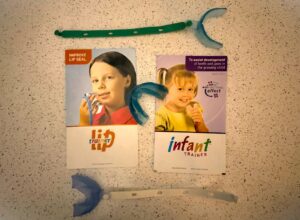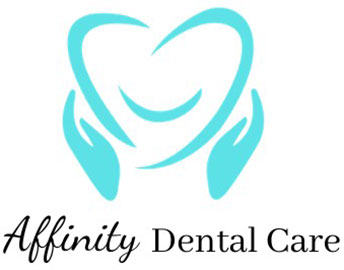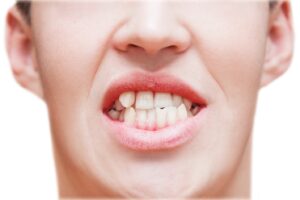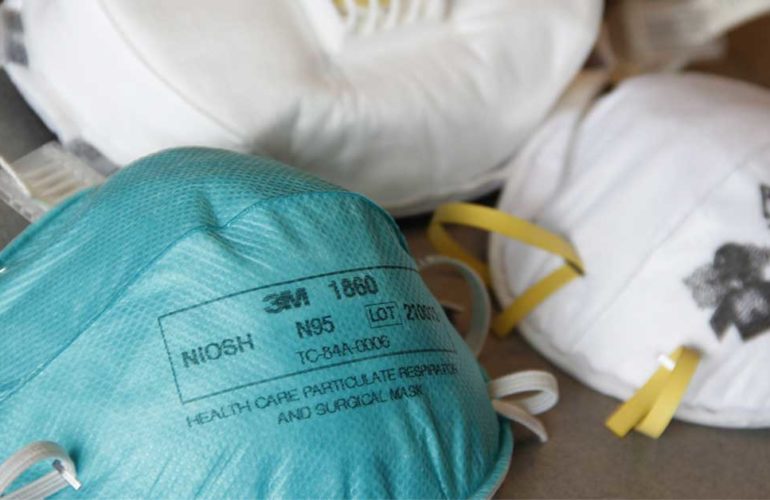Myofunctional Therapy and Myobrace are treatments that use silicone based oral appliances in effort to fix bad oral habits. As a wholistic and holistic dentist, I believe in treating the causes rather than just the symptoms.
For example, if a patient has a lot of cavities, a good dentist should not just fill the decay and not look at the reasons for having the dental disease. The treating dentist should wonder if the patient has high sugar consumption and does not brush the teeth regularly and correctly. If a dentist fills the cavities only (symptoms) and does not deal with the causes (sugar and poor oral hygiene), the patient will have recurrent cavities all over again without an end. That approach to the dental issue is not holistic at all!
Treating the causes is the best strategy to prevent issues from happening again.
How often have I seen a patient who had an orthodontic treatment done and experienced crowding of the teeth again?
Why were most patients told to wear their retainers for life since the teeth are already straight with enough room for them?
Does it mean the teeth are unstable in their corrected positions and why so?
Have we wondered why the teeth shifted again since there is enough space for all the teeth?
Is it genetic or environmental due to diet?
Could it be aging?
Teeth Stability | Myofunctional Therapy and Myobrace
The teeth locate where they are in our mouth because of the size, direction and strength of the forces exerted on them by our tongues, cheeks, and lips. Those structures (cheek, tongue and lip) consist of muscles and soft tissues in intimate contact with our teeth, pushing on the teeth all the time. Our tongues inside our mouth move the teeth outwards while our lips and cheeks counter-push the teeth inwardly. Simply put, the teeth sit at an equal outward and inward force on them – the equilibrium.
Additionally, orofacial and neuromuscular functions can modulate the magnitude of the force on the teeth by those structures. For someone who clenches and grinds their teeth a lot, the tongue constantly places more substantial pressure on the teeth during the clenching. A big strong tongue can exert more pressure on the teeth versus a small, less muscular tongue.
However, certain habits and myodysfunction can lead to excessive muscle activities and strength (tonicity) of one of the soft tissue groups (lips, cheeks and tongues) that can shift the equilibrium position to another. For example, a chronic sucking motion like thumb sucking would make our teeth move to accommodate the shape of the thumb (because of the thumb’s powerful pushing on the teeth), and the suction would cause the cheeks to squeeze on the teeth on both sides with more force. The teeth then move according to the new equilibrium of the different forces on them. The bad habits or conditions can be: mouth breathing, tongue thrusting, reverse swallowing, thumb sucking, tongue tie and more.
Our head and neck muscles are interconnected through our spines and skulls. Therefore, incorrect upper body postures like hunch and tilt (kyphosis and scoliosis) can affect the orofacial musculature and functions and vice versa. For example, suppose the pose is hunched forward. In that case, specific neck muscles will be overactivated to support our head, and that will cause some tension with some lower jaw muscles resulting in temporal mandibular dysfunctions. If you have chronic trouble with breathing, you will likely lean your head forward and move your lower jaw down and out to improve the airway. That posture will then strain your neck muscles.
Orofacial myofunctional disorders can lead to maladaptive skeletal development in the orofacial region, leading to undesirable facial aesthetics and other abnormal physiological conditions from childhood to adulthood.
The issues include:
- difficulty in breathing
- sleep-related breathing disorder
- obstructive sleep apnea
- heavy snoring
- head and neck tension
- headache
- temporal mandibular dysfunctions
- irregular bite
- difficulties in chewing
- swallowing
- speech
- poor posture
- and more
What are the bad habits and myodysfunction that Dr. Wong at Affinity Dental Care is concerned about? They are mouth breathing, tongue thrusting, reverse swallowing, thumb sucking and tongue tie.
Mouth breathing
This condition is common and can have an extensive negative impact on orofacial development and, in turn, sleep-related breathing disorders.
Because the lips are apart with the lower jaw rotated down and back to keep the mouth open for breathing, the cheek muscles are stretched and exert more force on the upper teeth at the back that squeezes the teeth inward to the centre, resulting in a narrow arch form. At the same time, the tongue rests on the lower teeth to allow air to come in through the mouth, and the lower jaw becomes more narrow.
Patients with chronic mouth breathing tend to have a long and narrow faces. The chins typically are back to form a convex facial profile.The nasal passages typically become more congested; perhaps you lose it if you do not use it. On top, the patients usually have more swollen and red gums from the air desiccation. Their tonsils are likely more inflamed and enlarged. They are also likely to have sleep-disordered breathing associated with teeth grinding and snoring.
Tongue Thrusting | Myofunctional Therapy and Myobrace
Patients with tongue thrusting habit stick their tongue forward between their upper and lower front teeth when they swallow, preventing their upper and lower front teeth from erupting to touch each other. In this case, the opening at the front is called an anterior open bite.
The back molars tend to overerupt. When there is an open bite, the patient must stick the tongue out to fill up the front opening to swallow. Patients with tongue thrust have more protruded front teeth, and their lips are apart when at rest. The speech is impaired with lisping in some cases with particular pronunciation. Their lower faces are usually long with improper bite (crossbite) at the back. Their gums are also red and inflamed in general.
Reverse Swallowing
During swallowing, the tongue should stay at the roof of the mouth, with the tongue rolling the food toward the throat. The process requires the tongue to press against the palate most of the time.
The patients with reverse swallowing keep their tongue down with their lips open, and much activity from their lower lips and mentalis muscles in the chin. The teeth are not together and are usually separated by the tongue. The lower jaw is moved backwards during the reverse swallow. The tongue tip moves down and forwards between the teeth. The tongue body moves down and backward away from the upper jaw. The tongue moves between the anterior teeth causing lower crowding and a backward lower jaw. The temporal mandibular joints are compressed as the joints (condyles) are driven back during each and every swallow. They tend to have temporary mandibular disorders (TMD) as well.
When they swallow, you notice that their lips and surrounding muscles are tight (hyperactive) because they use the orofacial muscles to propel the liquid and foods to the throats instead of the tongues alone.
Thumb Sucking | Myofunctional Therapy and Myobrace
If the kids continue to suck their thumb after three years old, there could be long-term issues with their teeth and orofacial development. The thumb pushes the tongue down and pushes the lower front teeth backwards while pushing the upper front teeth forwards. It can cause significant misalignment of teeth and jaw. It can cause the child to develop a reverse swallowing pattern in adaptation to the deficiencies perpetuating the maxillofacial dysplasia I mentioned earlier.
Tongue tie
A tongue tie is a condition someone is born with that the frenum is too tight that the tongue has limited, overly restricted movements. The frenum is too short, too thick or too broad. The tongue cannot rest properly below the palate and perform the suction during lactation and swallowing (see my previous blog on Tongue Tie).
Patients with severe tongue ties can suffer from small body sizes and other intellectual disabilities. Other ramifications include orofacial myofunctional disorders like chronic nasal congestion, lisping, speech impairment, mouth breathing, facial and maxillomandibular discrepancies, malocclusion, teeth crowding, and reverse swallowing.
How do Dr. Wong and the team treat the conditions? We employ myofunctional therapy and Myobrace to help the patients to adapt the correct orofacial physiology with their breathing, tongue posture and swallowing. We also support the patients in eliminating bad habits like thumb-sucking in children and obstructive sleep apnea in teenagers and adults.
What is myofunctional therapy? It is an exercise training program for the muscles around your face, mouth, and tongue. These exercises improve talking, eating, or breathing by engaging the muscles in the appropriate positions and movement patterns. Myofunctional therapy is equivalent to physiotherapy, except it is for the orofacial region. Myofunctional training and practice are effective and long-lasting, as the brain will acquire the new functions by laying out new neuronal connections that become a natural habit and pattern of proper breathing, tongue positions and functions.
What is Myobrace? Myobrace is a system that incorporates the principles of correct myofunctional that facilitates training for proper nasal breathing, tongue position, swallow pattern and lip seal. The system consists of appliances our patients wear while they receive myofunctional training and exercise. Therefore, the Myobrace system is like the devices (exercise ball, sling and resistance band etc.) that physiotherapists use while you are having therapy.
Affinity Dental Care | Myofunctional Therapy and Myobrace
We are trained and certified at Affinity Dental Care to provide orofacial myotherapy to our patients. We also offer dental sleep medicine screening and therapy to patients diagnosed with obstructive sleep apnea (OSA). OSA and OMD are interrelated. Treatment of one disease modality can help the other. Both can lead to other diseases (comorbidities) in your bodies, leading to poor health and possibly premature death.
Proper diagnosis allows for targeted and effective physical therapy exercises for oral posture retraining to promote better health with goals to improve breathing, reduce pain, and enhance the quality of life. Call Affinity Dental Care to book an appointment for a screening and consultation if you or your children are suffering from chronic mouth breathing, uneven bite with crowed teeth, tongue thrusting with an open bite at the front, excessive sleepiness during the day due to obstructive sleep apnea, and speech impairment due to tongue-tie.
Read some of our other blogs for more information on teeth implants, Myofunctional Therapy and Myobrace, botox in dentistry and more.






